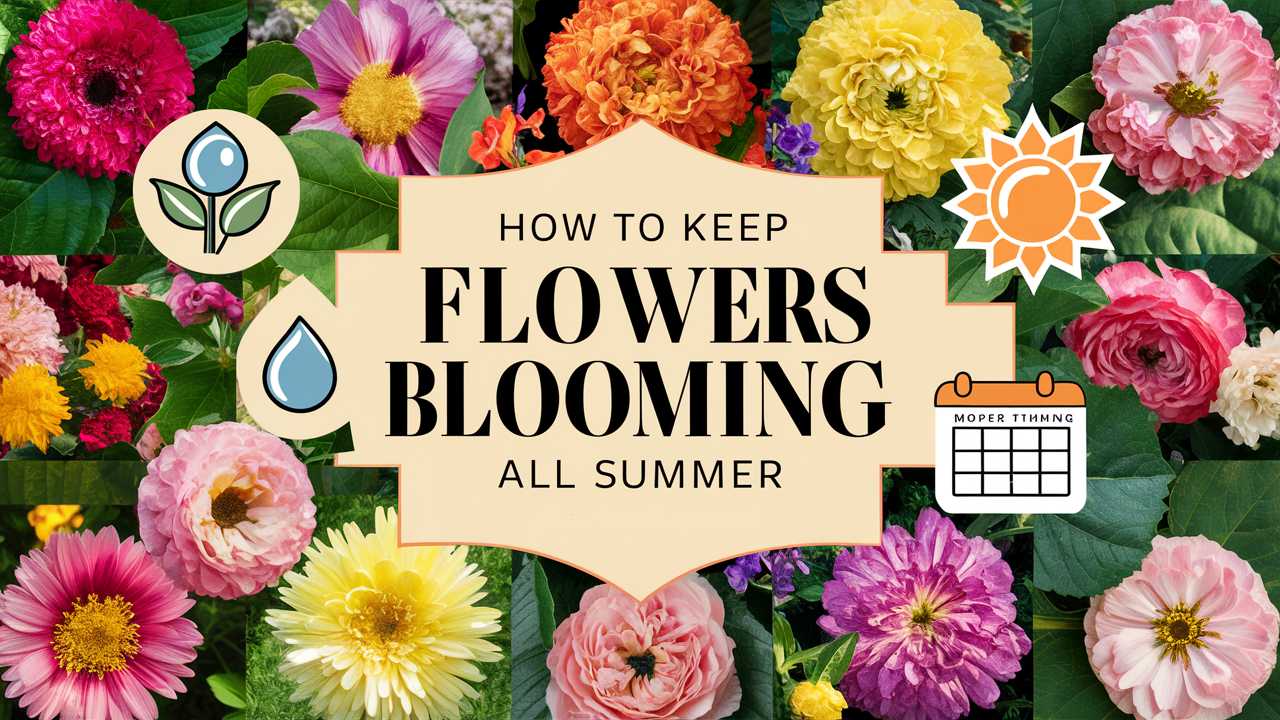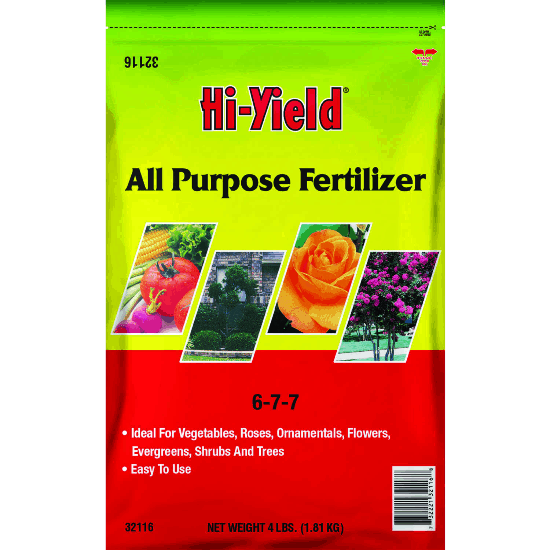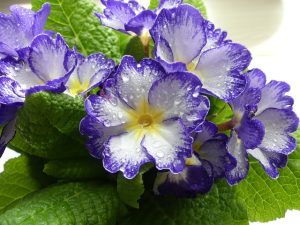In this post, we’ll explore essential tips and techniques to ensure your garden remains a breathtaking spectacle all season long.
Understanding Seasonal Flowers
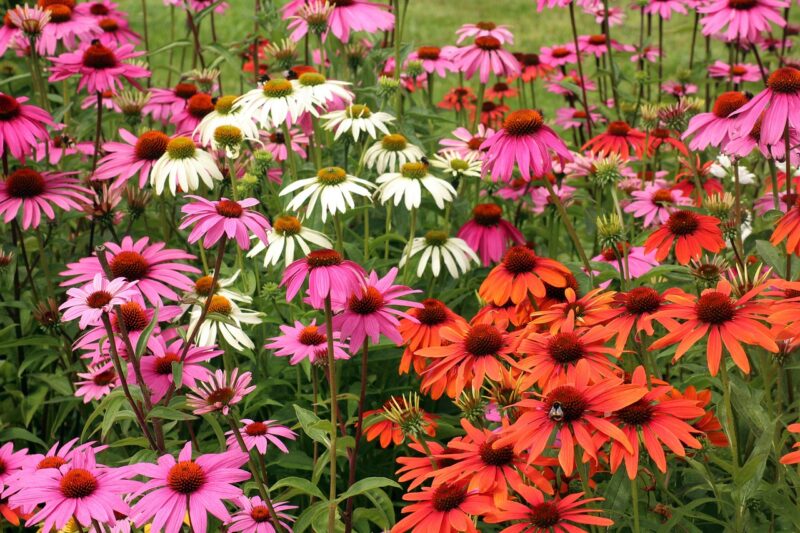
Before we dive into the nitty-gritty of flower care, it’s crucial to understand the difference between various types of flowers. They can generally be classified into perennials, annuals, and biennials, each of which has its blooming cycle and growth habits.
Perennials: These flowers come back year after year. However, their blooming period might be limited within the summer months. To maximize your garden’s productivity, choose a variety of perennials that bloom at different times, extending the colorful display across the entire summer.
Annuals: As their name suggests, these flowers complete their life cycle in one season. They offer robust colors and blooms throughout the summer, making them the perfect addition to any garden seeking a continuous display of flowers. Planting successive crops of annuals can keep your garden looking fresh and vibrant.
Biennials: Biennials take two years to complete their life cycle, growing leaves in the first year and flowering in the second. While they are not a primary source for summer blooms, they can provide a beautiful backdrop to more prolific annuals and perennials.
Knowing your flowers and their blooming cycles will enable you to plan your garden effectively for continuous blooms.
Choosing the Right Flowers for Summer
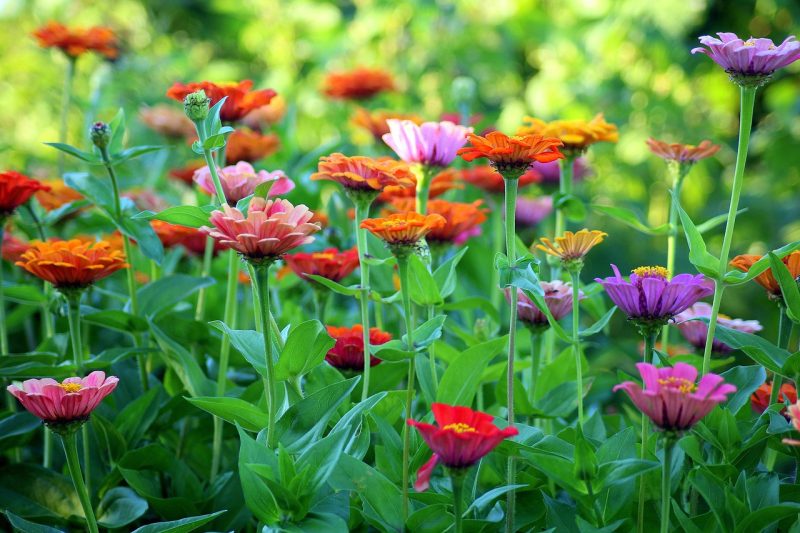
To create and maintain a vibrant summer garden, it’s essential to select flowers that thrive in warm weather. Here are a few top choices that can keep your garden alive with color all summer long:
Geraniums: These hardy annuals thrive in full sun and bloom continuously throughout summer with minimal care. Their vibrant colors can stand out beautifully in any landscape.
Zinnias: Known for their ability to tolerate heat, zinnias produce an array of colorful blooms all summer. Regular deadheading encourages more flowers to form, ensuring your garden remains lively.
Petunias: These popular garden favorites come in various colors and patterns. Their resilience in sunny spots makes them ideal for summer planting.
Secondary Bloomers: Incorporate flowers that bloom later in the summer, such as asters or mums, into your garden. Transitioning from early bloomers to late bloomers allows for extended color in your garden.
When selecting flowers, consider not only their bloom time but also their sun and water requirements, as planting complementary species can greatly enhance your garden’s overall health.
To Ensure Healthy Soil
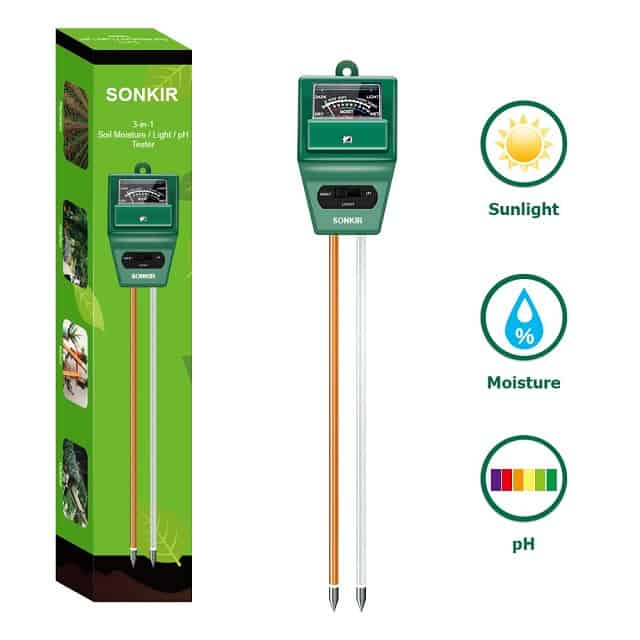
Healthy soil is the foundation of any thriving garden. If your flowers are to bloom continuously throughout summer, they must have access to nutrient-rich soil. Here are some tips to ensure your soil is in tip-top shape:
Testing the Soil: Start by testing your soil’s pH and nutrient levels. This knowledge enables you to amend the soil based on the specific needs of the flowers you are growing.
Amending Soil: Once you understand the soil composition, adding organic matter like compost can significantly improve soil fertility. Organic matter increases soil structure, enhances drainage, and promotes better aeration.
Mulching: A layer of mulch not only retains moisture but also helps to suppress weeds that compete with your flowers for nutrients. Use organic mulch materials, such as wood chips or straw, to enrich the soil gradually as they break down.
Soil Drainage: Ensure your garden has good drainage to avoid root rot. Flowers such as marigolds and lavender thrive in well-drained soils, while others may struggle if they sit in waterlogged conditions.
Growing healthy, blooming flowers in summer is impossible without enriching your soil first. The better the environment you create for your flowers, the more they’ll reward you with flourishing blooms.
Watering Techniques for Summer Blooms
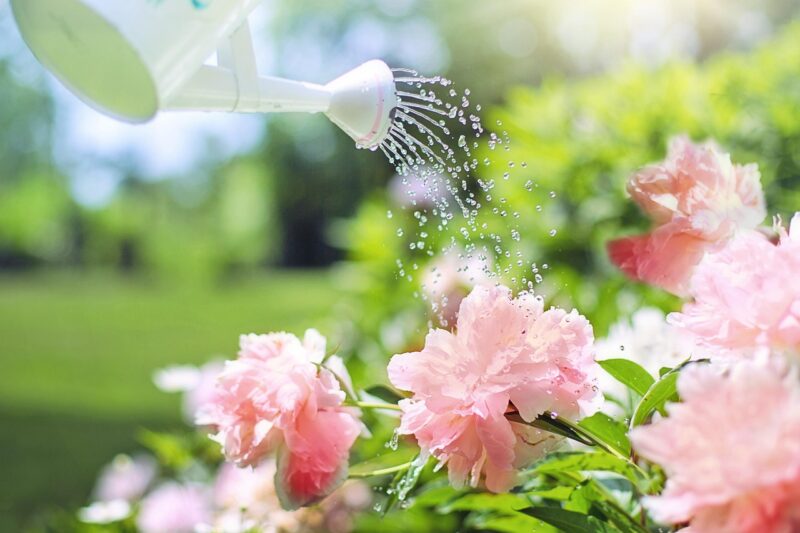
Water is one of the most crucial elements for thriving flowers during the scorching summer months. However, it’s not just about watering; it’s about doing it correctly. Here are some expert tips for watering your summer flowers:
Deep Watering: Instead of watering small amounts frequently, water deeply and less often. This encourages roots to grow downwards, making your plants more resilient to drought.
Timing Your Watering: Early morning is the best time to water your flowers, allowing the plants to absorb moisture during the cooler part of the day. Watering in direct sunlight can lead to evaporation, which means your flowers may miss out on the water they need.
Using Soaker Hoses: Consider employing soaker hoses or drip irrigation systems to ensure water reaches the plant roots directly, minimizing waste and promoting healthier blooms.
Observing Your Plants: Keep an eye on your flowers for signs of wilting or drooping. This can indicate that they need more water. Each species has its own needs; learning about your plants can help you deliver the precise care they require.
Regular and proper watering can be the difference between a vibrant summer garden and a wilting one. Monitor your garden and adjust your watering habits accordingly to keep those beautiful blooms flourishing.
Feeding and Fertilizing Your Flowers
Just like any living organism, flowers need sustenance to thrive. Providing them with the right nutrients through fertilization is key to keeping them blooming throughout the summer. Here’s how to go about it:
Choosing the Right Fertilizer: Different flowers may require varied nutrient profiles. A balanced fertilizer that includes nitrogen, phosphorus, and potassium is often beneficial for promoting blooming. Look for a higher middle number (phosphorus) on the N-P-K ratio to encourage flowering.
Time-Release Fertilizers: These fertilizers gradually release nutrients over time, reducing the need for frequent applications. This can be especially useful in summer when your focus may be elsewhere.
Organic Options: Organic fertilizers, such as fish emulsion or compost tea, can provide a slow release of nutrients, supporting sustained blooms without the risk of chemical burn.
Avoiding Over-Fertilization: Too much fertilizer can damage plants. Follow the package instructions carefully, and when in doubt, go for less rather than more. A good rule is to apply fertilizer every four to six weeks during the growing season, depending on the specific plant needs.
Proper fertilization provides the nutrients flowers need to thrive, leading to a more vivid and vivid garden display.
Pruning and Deadheading for Continuous Blooms

Deadheading and pruning are two essential practices that can significantly increase the longevity of your flower blooms. Here’s why they matter and how to do them right:
Deadheading: This process involves removing spent flowers before they can form seeds. By doing this, you encourage plants to direct energy towards producing new blooms rather than and seed production. It also keeps plants looking tidy and aesthetically pleasing.
Pruning: While deadheading focuses on removing florets, pruning involves cutting back stems and foliage that are past their prime. This allows for better air circulation, reducing the risk of disease and keeping plants healthy overall.
Understand Each Plant’s Needs: Different plants have different pruning and deadheading techniques. Research the specific requirements for the flowers in your garden to ensure you are caring for them optimally.
Taking the time to deadhead and prune your flowers not only enhances their beauty but also keeps the blooms coming all summer long.
Pest and Disease Management
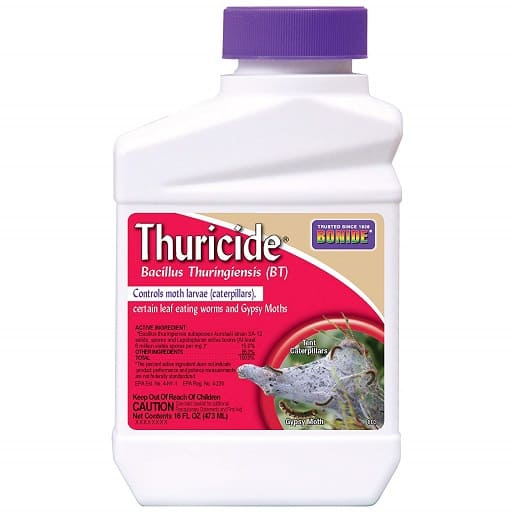
Summer also brings challenges, including pests and diseases that threaten the health of your blooms. Being proactive about management can save budding flowers from decline. Here’s how to approach pest and disease control:
Regular Inspections: Make it a routine to walk through your garden, inspecting plants for signs of pests like aphids or thrips. Early detection is key in managing infestations.
Encouraging Beneficial Insects: Attract natural predators such as ladybugs and lacewings by growing diverse plants. They help control pest populations without the need for harmful insecticides.
Using Organic Pesticides: If you must intervene, reach for organic options such as neem oil or insecticidal soap, which can be less harmful to beneficial insects and the environment compared to synthetic solutions.
Rotating Crops: Changing where you plant various species each year can help prevent soil-borne diseases. This pest management strategy keeps your flowers healthy and blooming for years to come.
Staying vigilant against pests and diseases extends the life of your blooms, ensuring your garden remains bright and inviting from spring through summer.
Enjoying the Fruits of Your Labor
At the end of the day, remember that gardening should be enjoyable. While keeping your flowers blooming all summer requires effort, the satisfaction of seeing your hard work pay off can be immensely rewarding. Here are a few tips to ensure you appreciate the beauty of your summer blooms:
Create a Relaxation Spot: Set up a comfortable chair or bench in your garden where you can sit and enjoy the fruits of your labor. This will be a space to unwind, reflect, and recharge amidst the colorful blooms.
Involve Family and Friends: Gardening can be a shared activity. Invite friends or family to join you in planting, deadheading, or simply enjoying your space, turning individual effort into a collective joy.
Capture the Moment: Keep a journal or take photographs to document the progression of your garden throughout the summer. Reflecting on how quickly things grow can deepen your love for gardening.
Gardening is as much about the experience as it is about the blooms. Celebrate your journey, and let each flower remind you of the joy and beauty of summer.


